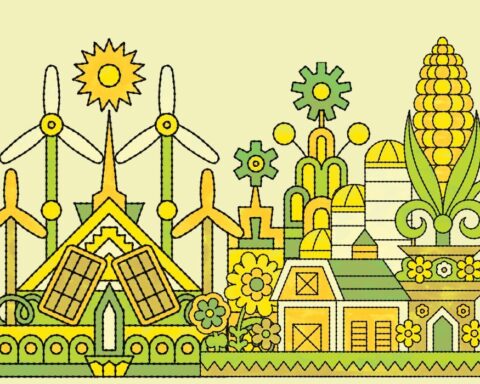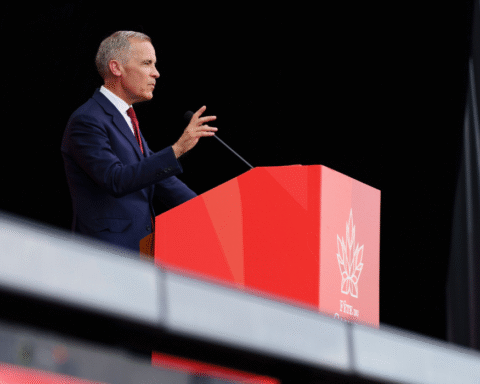In recent years, we have seen a resurgence in the Indigenous economy. There are close to 60,000 Indigenous businesses in Canada, operating in every sector, size and region, with Indigenous people creating businesses at nine times the rate of non-Indigenous Canadians.
Then, of course, COVID happened. The day we announced to our staff that I would be the new CEO of the Canadian Council for Aboriginal Business (CCAB) was also the last day we all worked in the office together. On March 16, 2020 we began working remotely to help stop the spread of a new virus that had begun to sweep across the globe. Since then, I have seen businesses and communities pull together in formidable ways, but there’s no denying that the pandemic has been particularly hard on Indigenous businesses.
In May, we launched a survey in partnership with the Indigenous Business COVID-19 Response Taskforce to understand the impact of the pandemic on Indigenous businesses. The results were deeply worrying. Just under half (44%) of Indigenous businesses indicated that, without support, they were likely to fail after three to six months, while 10% of businesses predicted operations could not last more than a month without support; 2% said their businesses had already closed.
There were also some stark differences between demographic groups:
• 61% of women-owned Indigenous businesses reported a “very negative” impact compared to 53% of men-owned businesses.
• 38% of Inuit-owned businesses experienced a revenue drop of 50% or more, compared to 27% of Métis and 31% of First Nations–owned businesses.
While the federal government was quick to announce support for Canadian businesses last spring, Indigenous businesses were initially ineligible for some programs because of their unique business or tax structures. There was also no initial support for the more than half of Indigenous businesses that don’t use traditional financial institutions to access financing, in particular those owners who live on-reserve and lack the collateral typically used to get a loan. The pandemic has only highlighted that Indigenous businesses face distinct barriers. Limited access to financing, unreliable internet access, lack of adequate infrastructure, and limited personal net worth are some of the key issues that have been exacerbated over the past year. Economic reconciliation means addressing these barriers.
Understanding the unique ways that Indigenous business, and as a result the Indigenous economy, operates – much of which has been out of necessity – is a key element to ensuring equitable access to resources. And if Indigenous-owned businesses are to thrive, they’ll need more than just better access to loans, financing and COVID-response programs. In 2019, the Government of Canada committed to having “at least 5% of federal contracts awarded to businesses managed and led by Indigenous Peoples.” Though that figure has been as low as 0.32% some years, CCAB research demonstrates that Indigenous businesses in Canada could meet up to 24% of the federal government’s current spend.
Despite the barriers that Indigenous people have faced since contact, they have persisted. That determination was demonstrated last spring, when many Indigenous businesses pivoted their operations to supply personal protective equipment to help meet increased demand. Our survey identified 84 businesses providing PPE and 57 that could quickly retool to do so. However, there was little evidence of the federal government meeting its 5% target on PPE contracts.
Through our Aboriginal Procurement Marketplace, we already connect 72 Procurement Champions – Canadian companies that have committed to Indigenous procurement – with hundreds of businesses certified to be 51% or more owned and controlled by Indigenous people, through the Certified Aboriginal Business program. By increasing Indigenous procurement, corporate Canada can be part of moving the dial on economic reconciliation – a mutually beneficial opportunity that supports the Indigenous economy without affecting a corporation’s bottom line.
Initial results of a second survey to see how Indigenous businesses are faring nearly a year into the pandemic demonstrate that although things are more optimistic for business owners, they still report negative impacts, particularly on revenues and staff. They continue to face challenges accessing government support. Despite the odds, Indigenous businesses like media company Kejic Productions, cosmetic start-up Cheekbone Beauty and skincare company Satya Organic have seen impressive growth this past year. As economies recover from the pandemic, we want to build on that growth.
As our 2020 COVID survey showed, recovery will be a particularly volatile time for Indigenous businesses as they navigate additional barriers, but Indigenous businesses have demonstrated capacity, determination and innovative thinking in the face of the pandemic. It’s more important than ever that as we reopen and rebuild, we ensure that we build an inclusive, more equitable economy that benefits us all.
Tabatha Bull is president & CEO of the Canadian Council for Aboriginal Business.
This article is part of our Indigenous Economy Rising cover series from Corporate Knights Spring Issue, out April 21, 2021.







